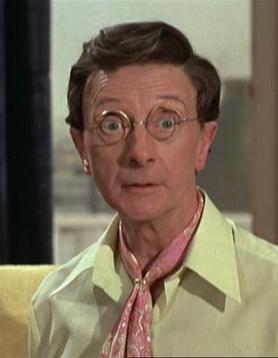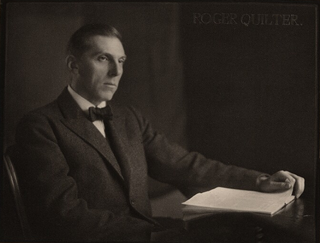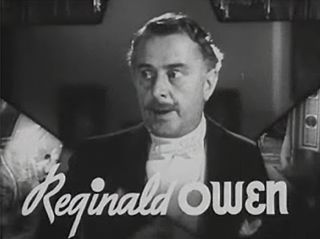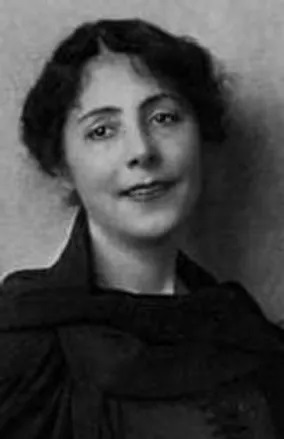
George Frederick Joffre Hartree, known as Charles Hawtrey, was an English actor, comedian, singer, pianist and theatre director.

Roger Livesey was a British stage and film actor. He is most often remembered for the three Powell & Pressburger films in which he starred: The Life and Death of Colonel Blimp, I Know Where I'm Going! and A Matter of Life and Death. Tall and broad with a mop of chestnut hair, Livesey used his highly distinctive husky voice, gentle manner and athletic physique to create many notable roles in his theatre and film work.

William Brian de Lacy Aherne was an English actor of stage, screen, radio and television, who enjoyed a long and varied career in Britain and the United States.

Dinah Sheridan was an English actress with a career spanning seven decades. She was best known for the films Genevieve (1953) and The Railway Children (1970); the long-running BBC comedy series Don't Wait Up (1983–1990); and for her distinguished theatre career in London's West End.

Roger Cuthbert Quilter was a British composer, known particularly for his art songs. His songs, which number over a hundred, often set music to text by William Shakespeare and are a mainstay of the English art song tradition.
John Ramsey (1887–1972) was a pseudonym used by Reginald Owen. He was co-author of the 1911 play Where the Rainbow Ends with Mrs Clifford Mills and music by R. Quilter. Owen provided stage know-how.

John Reginald Owen was a British actor, known for his many roles in British and American films and television programs.

Gervase Henry Cary-Elwes, DL, better known as Gervase Elwes, was an English tenor of great distinction, who exercised a powerful influence over the development of English music from the early 1900s up until his death in 1921 due to a railroad accident in Boston at the height of his career.

Peter Quilter is a West End and Broadway playwright whose plays have been translated into 30 languages and performed in over 40 countries. He is best known for his Broadway play End of the Rainbow, which was adapted for the Oscar-winning film Judy (2019), starring Renée Zellweger. He is also author of the West End comedy "Glorious!" about the amateur opera singer Florence Foster Jenkins. Peter has twice been nominated for the Olivier Award and his Broadway debut was nominated for 3 Tony Awards.

Frederic William Austin was an English baritone singer, a musical teacher and composer in the period 1905–30. He is perhaps best remembered for his arrangement of Johann Pepusch's music for a 1920 production of The Beggar's Opera by John Gay, and its sequel Polly in 1922; and for his popularization of the melody of the carol The Twelve Days of Christmas. Austin was the older brother of the composer Ernest Austin (1874–1947).
Frederick B. Kiddle was a prominent English pianist, organist and accompanist.

On with the Dance is a 1925 musical revue produced by C. B. Cochran, with sketches by Noël Coward, songs by Coward and Philip Braham and ballet numbers, one of which was composed by Roger Quilter and choreographed by Leonid Massine. It starred Alice Delysia, and Massine, who danced in two of four dance sequences. The show ran in the West End of London for 229 performances.

Lydia Bilbrook, sometimes credited as "Bilbrooke", was an English actress whose career spanned four decades, first as a stage performer in the West End, and later in films. She is best known to today's audiences as "Lady Ada Epping" opposite comedian Leon Errol in the Mexican Spitfire movie comedies of the 1940s.
The Arnold Book of Old Songs is a collection of English, Scottish, Irish, Welsh and French folk songs and traditional songs, with new piano accompaniments by Roger Quilter. Quilter dedicated it to and named it after his nephew Arnold Guy Vivian, who perished at the hands of German forces in Italy in 1943.
Harry Quilter, was an English art critic, writer and artist.
Rodney Bennett (1890-1948) was a playwright, children's author, and lyricist, who also wrote under the name Royden Barrie. He was the father of the poet M. R. Peacocke and the composer Richard Rodney Bennett.
This is a complete bibliography for American children's writer L. Frank Baum.

Italia Emily Stella Conti was an English actress and the founder of the Italia Conti Academy of Theatre Arts in London.
This is a summary of 1911 in music in the United Kingdom.
Clifford Mills (1863–1933) was a British playwright, best known for the plays Where the Rainbow Ends and The Luck of the Navy.











